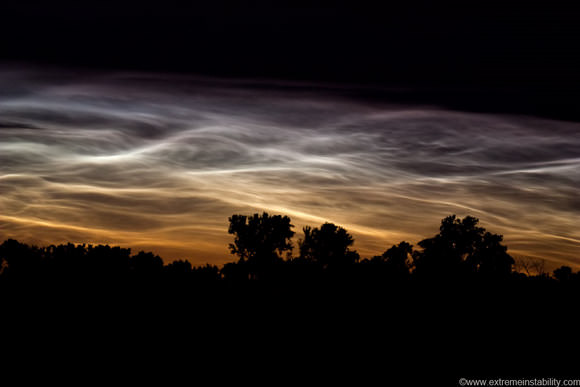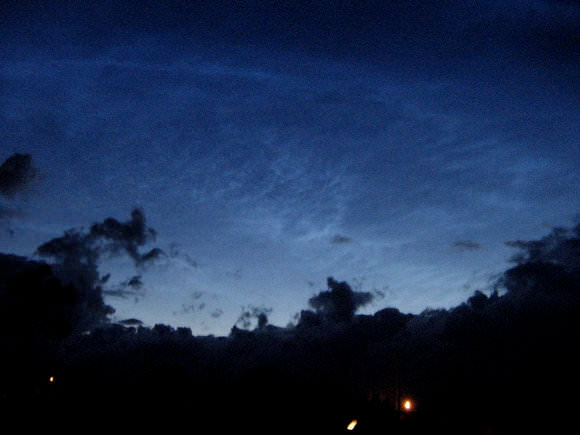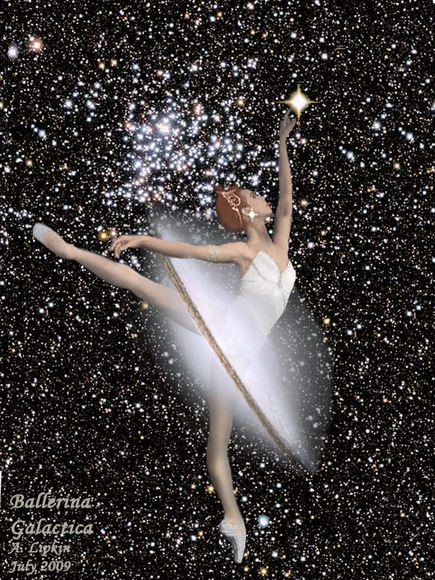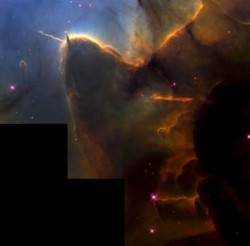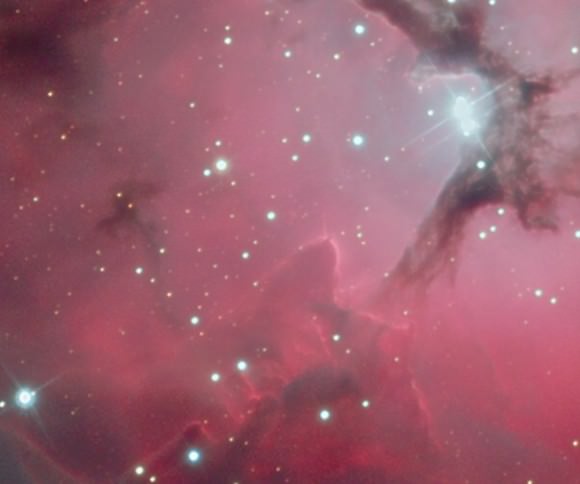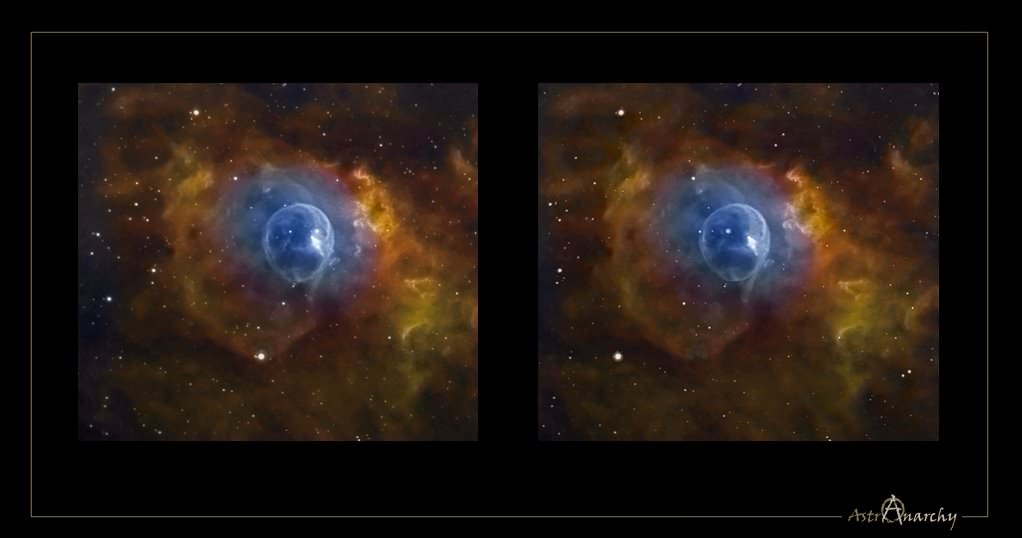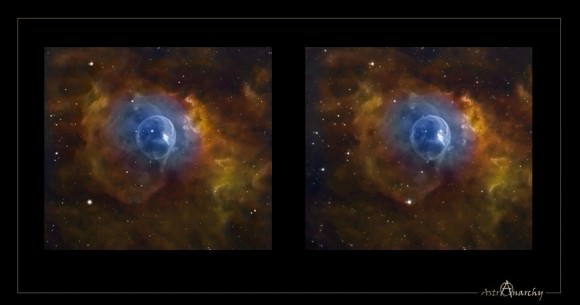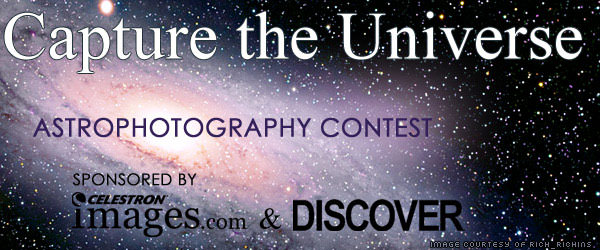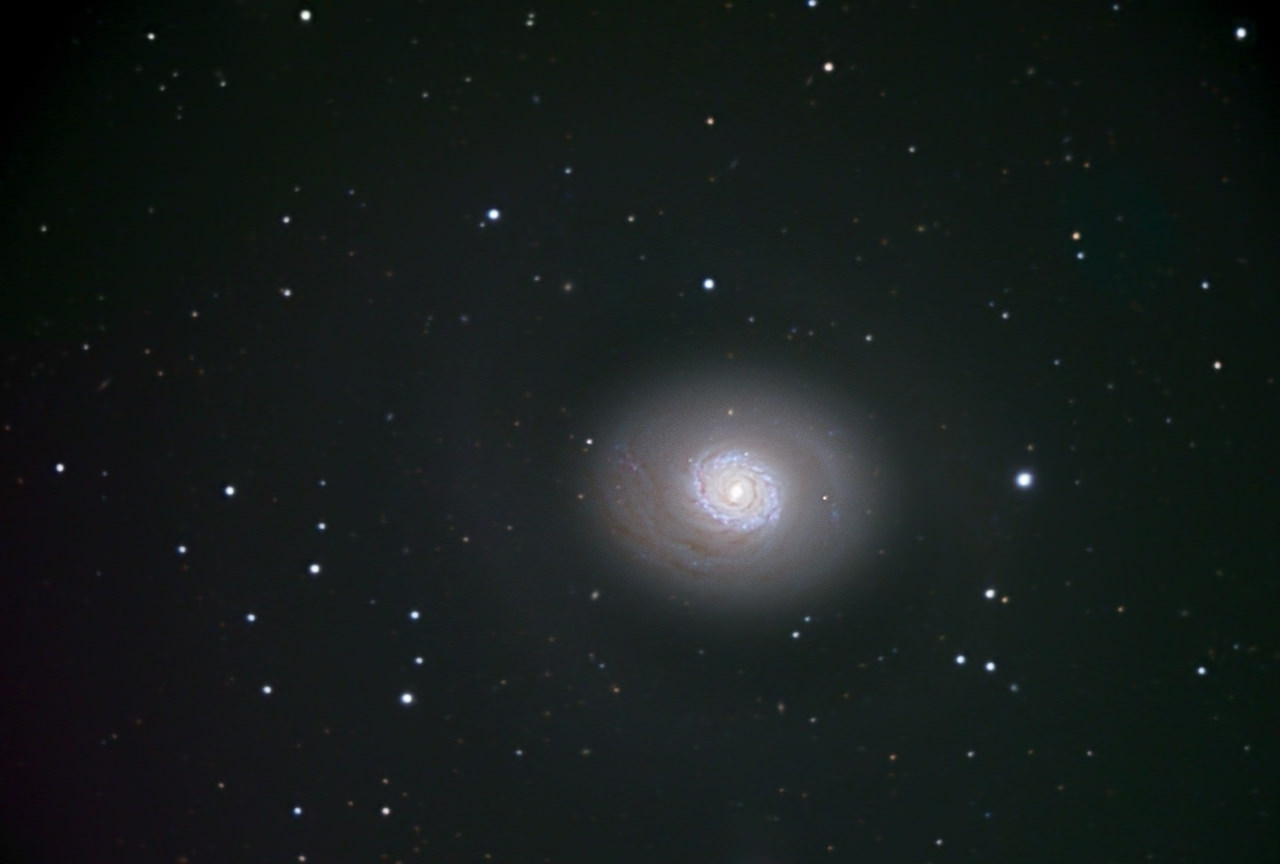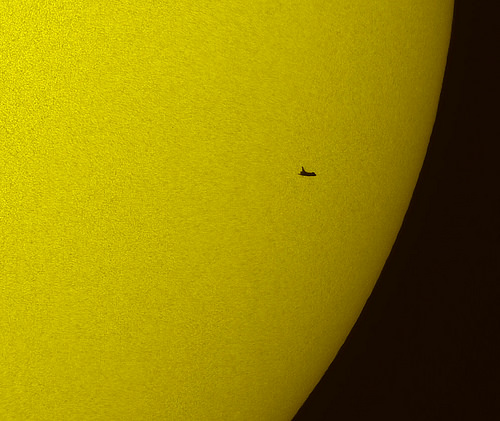This beautiful Leo spiral galaxy – NGC 2903 – is only some 20 million light-years away and is one of the brightest galaxies visible from the northern hemisphere. Despite easily being seen in larger binoculars and small telescopes, for some reason it was never included in Charles Messier’s famous catalog of celestial grandeur. “You don’t understand! I could’a had class. I could’a been a contender. I could’a been somebody instead of a bum, which is what I am.” This incredible color image taken with an amateur ground-based telescope shows off the galaxy’s exquisite spiral arms – including intriguing details of NGC 2903’s core region, a stunning amalgamation of old and young star clusters with immense dust and gas clouds. But there’s a whole lot more there to be seen…
Just a little smaller than our own Milky Way, NGC 2903 is about 80,000 light-years across and displays an exceptional rate of star formation activity near its core in visible light – but it also screams bright in radio, infrared, ultraviolet, and x-ray bands. While in every respect, this galaxy is much like our own home neighborhood, just like “On The Waterfront”, there’s some mysterious goings-on along that central bar – very young, hot globular clusters. Apparently, star formation is absolutely running rampant in a 2000 light-year wide circumnuclear ring surrounding NGC 2903’s center. “This isolated system strikingly reveals a soft extended X-ray feature reaching in north-west direction up to a projected distance of 5.2 kpc from the center into the halo. The residual X-ray emission in the disk reveals the same extension as the Ha disk. Since galactic superwinds, giant kpc-scale galactic outflows, seem to be a common phenomenon observed in a number of edge-on galaxies, especially in the X-ray regime, and are produced by excess star-formation activity, the existence of hot halo gas as found in NGC 2903 can be attributed to events such as central starbursts.” says D. Tschoke (et al), “That such a starburst has taken place in NGC 2903 must be proven. The detection of hot gas above galaxy disks also with intermediate inclination, however, encounters the difficulty of discriminating between that contribution from disk and active nuclear region.”
So what causes extremely starburst activity? As we’ve learned from our astrophoto lessons – galaxy interaction is a prime suspect. “NGC 2903 is found to have an H I envelope that is larger than previously known, extending to at least three times the optical diameter of the galaxy. Our search for companions yields one new discovery. The companion is 64 kpc from NGC 2903 in projection, is likely associated with a small optical galaxy of similar total stellar mass, and is dark matter dominated. In the region surveyed, there are now two known companions: our new discovery and a previously known system that is likely a dwarf spheroidal, lacking H I content.” says Judith A. Irwin (et al), “If H I constitutes 1% of the total mass in all possible companions, then we should have detected 230 companions, according to cold dark matter (CDM) predictions. Consequently, if this number of dark-matter clumps are indeed present, then they contain less than 1% H I content, possibly existing as very faint dwarf spheroidals or as starless, gasless dark-matter clumps.”
So how do we study what we cannot see? Only through photography and understanding how each phase of cosmic construction affects photographic results. “These results, and other considerations, have led to the hypothesis that the dark matter surrounding spiral galaxies consists of cold gas, mainly in the form of molecular hydrogen. The spatial distribution of this cold gas should be similar to that of the observed neutral hydrogen.” says H. Hoekstra of the Kapteyn Astronomical Institut, “There is a potentially powerful selection effect that may cause a relationship between the surface densities of HI and dark matter for the galaxies in our sample. This is because the HI surface density distributions of the galaxies in our sample have the common characteristic that the highest values in the inner regions, as well as the lowest values in the outer regions are similar from galaxy to galaxy.”
Now that we understand how astrophotos are used to determine galactic properties, open the image and take a closer look at all the galaxies hidden nearby NGC 2903 – and the details inside. When Warren Keller and David Plesko at Cherry Mountain Observatory collaborated on this photo, you can bet the first results from the raw data didn’t look like this finished work of art. For those of you who already understand the ins and outs of what makes deep space imaging what it is – perhaps I’ll totally explain this wrong, because it’s a new concept to me… But that’s why the world has Warren Keller.
When processing a raw image, there’s a lot more to it that just whacking it into photoshop and tweaking this or adjusting that. There’s things hiding inside and just like a great symphony, it takes a composer and a virtuoso to end up with music to make you cry. Because I don’t fully understand the process, I asked Warren to help me along, so I might also understand how these tiny details are drawn from thin air… or the blankness of space. “One of my big things is color balance- being true to the data, coupled with an understanding of how the object should look. What I see though is what I call assumptive processing- ‘It’s a galaxy and its arms must be really blue!’ In reality, each is very different and that’s why I love ’em so much. That sets a precedent, but I say be faithful to the data (once gradients are eliminated).”
And taking that data and teaching others how to process it is what Warren is all about. “All that being said, I’m aware of Atmospheric Extinction, CCD’s relative insensitvity to Blue, especially front lit and ABGs and the cancellation of Blue by the yellowing lens of middle-aged folks.” But is there a way that even us yellowing old dogs can be taught new tricks? Yeah. Warren not only knows how to sing the song, but he’s a music teacher. He’s created a teaching program called Image Processing for Astrophotography – or IP4AP. Say’s Warren: “IP4AP “Image Processing For Astrophotography” was created for Astrophotographers of all skill levels. There are many resources for learning Image Processing, but we believe these techniques are best taught – Visually!”
So, I was curious… And here’s a introductory look at Warren’s teaching style:
Before you take a cut out of me for being “commercial”, please remember that my job as a astronomical reporter is to also find products and methods which I find exciting and our readers might want to be made aware of. And, quite frankly, after having looking at many of Warren’s images and how his lesson plans work, I thought there just might be more than one budding (or seasoned) astrophotographer out there that might find what IP4AP has to offer of great value. As a matter of fact, even premier astro imagers like Dietmar Hager have used it. “Having had a couple of sessions with Warren covering essential facts about sophisticated usage of AstroArt and Photoshop was like leading me out of the dark basement of astrophotography into the highlighted groundfloor and further up. Guys, and I can tell you this is a high rise building and Warren is the perfect guide. Thanks for enriching my knowledge about digital processing!”
Go on, open it… Count all the details you can see in this image of NGC 2903 and its companions… and when you’re ready to become a contender, you can find IP4AP at many great retailers like OPT, Adirondak Astronomy and High Point Scientific. You’ve made a large investment in equipment – Now make a small one and learn the secrets of producing stunning astrophotographs!


